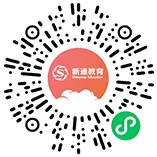2016年2月28日托福考试已经结束,2月28日托福考试难度如何,是新题还是旧题?新通教育专家为大家奉上2016年2月28日托福考试阅读真题网友回忆版,希望新通教育专家对2月28日托福听阅读福真题的解析,能为正在备考的考生提供一些思路。
2月28日托福阅读第一篇
题材划分: 贸易类
主要内容:欧洲15世纪的羊毛产业。由城市发展到农村,由城市发展到农村的原因是城市的手工业被类似行业协会的组织控制价格,而农村不受控制,所以价格较低,于是商人进入农村收购产品。采用承包生产机制,提到了西班牙。十五世纪变成了羊毛主要出口国,西班牙大量出口羊到意大利和英国,英国变成了主要进口国,英国进行成品加工。然后英国因为水车的原因布匹处理速度很大提升,要把各种东西打在布匹上使布匹软化的工序原来需要很多人,有了水车后一个人就能搞定了。然后由于伦敦靠海,布匹产量大,使得贸易很方便,伦敦人口越来越多也更加繁华了。新型生产模式使得新公司大量涌入市场,老公司觉得破坏了原有生产模式。部分北欧政府限制老公司的资源,以更好的保护员工等。
相似TPO练习推荐
TPO10-Seventeenth-Century European Economic Growth
相关背景知识:
Between 1450 and 1800, textile production was second only to agriculture in economic importance. It employed more people and produced more profit than any other manufactured product. Production and trade existed at two levels. Everywhere peasants and villagers turned locally grown wool and flax into fabric and clothing for themselves and their neighbors. The cloth they produced was of poor quality and not designed for export to distant markets. On top of this local market sat a large and lucrative luxury trade in silk, wool, linen, and (eventually) cotton fabric, the most important of which were heavy woolens. The customers for these fabrics were wealthy landowners, government and church officials, merchants, financiers, aristocrats, and master craftsmen in Europe, Asia and the Levant.
Ireland and the Baltic region supplied much of Europe's flax, although it was widely grown and available. In the sixteenth century, Venice and other Italian cities acquired silkworms and mulberry trees, and began silk manufacturing. From there, the silk industry made its way north to Holland, Zurich, Lyon, Cologne, and Spital fields (East London), England. At the same time, cotton thread and fabric began to arrive from India and became wildly popular.
Most important of all the textile industries was the trade in raw wool and wool fabric. Sheep raising abounded everywhere. In the fifteenth century, the best fleeces came from England. In the sixteenth century, Spanish merino sheep knocked English sheep into second place. French sheep were considered to produce the third best wool. Two types of wool fabric were produced in Europe—woolens and worsteds. Of the two, the market for woolens was by far the larger. Woolens were made from short-staple wool fibers that were swirled together before spinning. The cloth had a soft-textured appearance and feel. Worsteds were made from long-staple wool and had a harder, smoother finish. Soft woolens were considered far more desirable than the harsher worsteds and dominated the wool trade.
In the fifteenth century, textile manufacturing was an urban industry, controlled by wealthy merchants (drapers) who purchased raw wool, had it turned into cloth, and then sold it, often to other craftsmen who performed the final finishing steps, including dyeing and teaseling. These were capital-intensive crafts, and cloth merchants often preferred not to be involved in them. Before the seventeenth century, most English cloth was dyed and finished in Holland. In England, in addition to merchants who only bought and sold, clothiers, themselves often master weavers, controlled a great deal of the woolen trade.
In the fifteenth and sixteenth centuries, textile workers dominated the population of towns like Venice and Leiden. By the sixteenth century, however, merchants had discovered that they could avoid the high wages, labor shortages, and quality controls imposed by urban guilds and governments by hiring peasants to do manufacturing work in their homes. Urban merchants continued to control production, but much of the work force was spread out through the countryside. Alternately referred to as the putting-out system, cottage manufacturing, and the Verlag system, merchants (Verlagers) found they could save money (rural workers could work for less because they produced much of their own food) and increase production at the same time. Trained cottage workers could be as skilled as urban workers, but many alternated farming and manufacturing and produced goods of lesser quality. The high-end woolen trade remained important, but many merchants began to reorient their businesses away from the luxury market and toward lower-quality, lower-priced, and more rapidly produced goods.
查看完整版托福阅读真题解析,请点击下方或拨打新通教育免费热线索要吧!
咨询时间:8:00~24:00
 400-618-8866
400-618-8866
咨询时间:8:00~24:00
扫一扫
立即报名

扫一扫
立即进站

想要获取更多考试培训信息,可以通过以下方式联系到距离您最近的新通教育;
1、拨打新通教育咨询热线:400-618-8866;
2、点击【立即咨询】 ,我们会有课程老师为你解答考试难题;
3、完成以下表单,轻松预约,预约获取定制学习方案的机会。